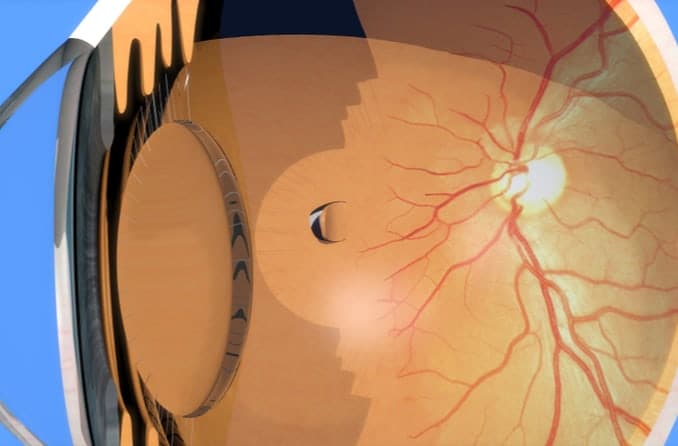Eye floaters after cataract surgery
Cataract surgery is a very common procedure to restore vision. When the eye’s natural lens becomes cloudy due to aging or other factors, it is removed and replaced with a clear intraocular lens (IOL) to bring things back into focus.
After cataract surgery, vision is much clearer and sharper than before. While this is the result eye surgeons strive for, it’s common for patients to complain of eye floaters after cataract surgery.
That does not mean cataract surgery is the cause of eye floaters. Rather, floaters were already present in the eye but obscured by the cataract, and after clear vision is restored by the surgery, the floaters become more visible.
Eye floaters are caused by tiny clumps of a protein called collagen that are suspended in the vitreous (the gel-like substance within the eye). When light enters the eye, these opaque bits of collagen cast a shadow on the retina that creates the appearance of floaters.
Cataracts scatter light and therefore reduce the amount and clarity of light focused on the retina. Because the level of light is reduced, the floaters don’t cast much of a shadow, making them less visible. Compare it to how well you cast a shadow on a sunny day compared to an overcast or cloudy day.
When the cataracts are removed and more light is clearly focused on the retina again, the eye floaters cast darker, clearer shadows, making them more visible than before.
SEE RELATED: Eye floaters and flashes FAQ
Light flashes after cataract surgery
Eye floaters aren’t the only nuisance that can be experienced after cataract surgery. Light flashes and other unwanted images, or dysphotopsias, are fairly common in the first hours and days after the procedure.
When light flashes (positive dysphotopsias) occur after cataract surgery, they usually appear briefly in your peripheral vision or slightly off to the side of objects you’re looking at. In some cases, people may notice shadows (negative dysphotopsias) rather than light flashes in their peripheral vision after surgery.
Positive and negative dysphotopsias are associated with the material, design and placement of the IOL used in cataract surgery.
Some researchers say up to 50% of patients experience some form of dysphotopsia in the first few days following cataract surgery.
In most cases, flashes of light in the eye after cataract surgery disappear in a relatively short period of time. But if they are persistent and bothersome, see your cataract surgeon. In severe cases, the original IOL may need to be replaced with a new one to eliminate persistent dysphotopsias.
Other surgery that can result in floaters
As mentioned earlier, eye surgery typically doesn't cause floaters. However, some people who undergo eye surgery such as LASIK say they see floaters afterward.
In most cases, this can be explained by the fact that their vision is clearer after surgery, making already-present floaters more visible.
Surgery to remove eye floaters
A procedure called a vitrectomy consists of removing the vitreous and replacing it with a saline solution so your eye is able to keep its shape. While it can help with eye floaters, a vitrectomy is not typically used for this problem.
Vitrectomies are invasive and somewhat high-risk procedures that are typically performed for the treatment of more serious eye problems such as advanced diabetic retinopathy.
YAG laser vitreolysis is an effective and less invasive treatment for eye floaters. In this procedure, an yttrium aluminum garnet (YAG) laser is used to break up and dissolve floaters. The laser treatment takes only a few minutes.
While there is still a chance that some floaters will remain or resurface later on, 93% of patients involved in an observational study said they were happy with the results of YAG laser vitreolysis.
Consult an eye doctor
If you are bothered by floaters after cataract surgery or other eye surgery, schedule a dilated eye exam. Your eye doctor can evaluate the extent and location of your floaters and advise you about the risks, rewards of removing floaters after eye surgery.
READ MORE: Eye floaters treatment










